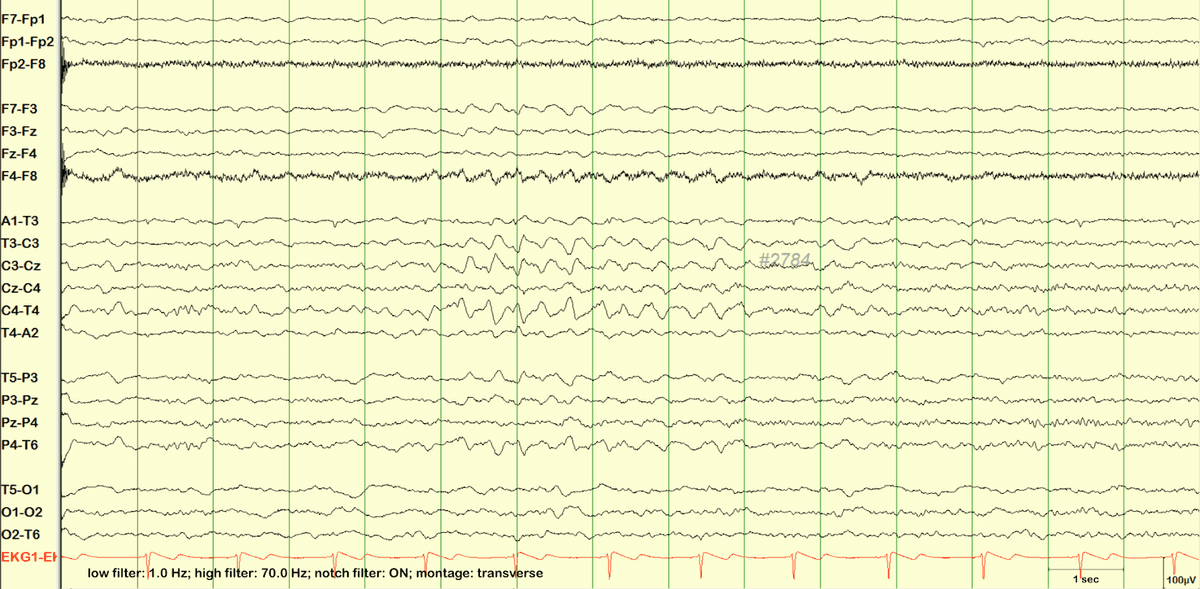“Sawtooth waves” are serial V wave–like trains in the theta range that may appear unilaterally or bilaterally. This medium amplitude waveform occurs intermittently in the frontocentral (centrally dominant) head regions during REM sleep and is considered a normal variant. Sawtooth waves have a sharply contoured morphology. The name is due to their appearance in slow sweep speed (30 mm/s) on PSG recordings.
Question:
What are other key EEG features that would indicate REM sleep?
Results
#1. What are other key EEG features that would indicate REM sleep?
REM sleep is marked by rapid eye movements, seen as saccadic eye movement artifacts in the frontal derivations, along with a low-voltage, mixed frequency EEG and very low-amplitude EMG activity, usually recorded at the chin. Centrally dominant “sawtooth waves” in the theta frequency range can sometimes be seen during REM, but are not required.
Stage 3 and REM are rarely encountered in routine EEG recordings, as the patient is seldom recorded for long enough to enter the deeper NREM or REM sleep stages. REM may be rarely encountered in narcoleptic patients and is commonly seen during long-term continuous EEG monitoring. However, EMG electrodes are not usually included in routine EEG or long-term video-EEG recordings; hence, determination of REM sleep can be difficult in routine EEGs even when it does occur.





